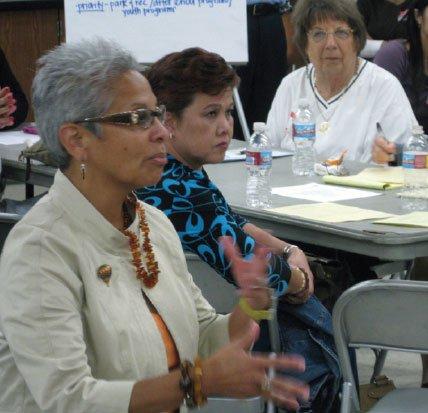New Resources Support Census Count and More
Terry Amsler is program director of the Institute for Local Government’s Collaborative Governance Initiative and can be reached at tamsler@ca-ilg.org.
Census Day is April 1, 2010 — just three short months away. Ensuring a complete count of all residents in this year’s census is vitally important because it affects federal funding, reapportionment and other matters that directly impact California communities. The Institute for Local Government (ILG) offers comprehensive information online at www.ca-ilg.org/census to help local officials support a complete count of their community’s residents.
While the census is high on the long list of local priorities, it offers just one example of the many ways that resident participation pays off for cities. Involving community members in local budgeting is another. A new publication from ILG’s Collaborative Governance Initiative, A Local Official’s Guide to Public Engagement in Local Budgeting, describes a range of these local agency endeavors throughout the state and offers practical advice on how to implement them successfully (online at www.ca-ilg.org/cgipubs).
Local officials are convening more deliberative public meetings and working more collaboratively with a broad spectrum of community groups. An upcoming Collaborative Governance Initiative publication, A Local Official’s Guide to Working More Effectively with Clergy and Congregations, chronicles how relationships with a community’s religion sector can help extend local agency outreach and information-sharing and enhance local public service delivery.
To help local officials exercise leadership in extending opportunities for participation and inclusion to all residents, the Collaborative Governance Initiative recently created a two-page brochure, Ten Ideas to Encourage Immigrant Engagement (also at www.ca-ilg.org/cgipubs). This short overview summarizes much of the material contained in A Local Official’s Guide to Immigrant Civic Engagement, which is available from the same web page.
Many local officials realize that their leadership must include an educational component because too few residents understand local government operations and responsibilities, including the services that cities and counties provide and the revenues that support them. In addition to broader public engagement, local efforts to inform residents about local government include citizen academies and other educational and leadership programs, as well as an increased focus on educating young people about civics.
To support these efforts, ILG has compiled a roster of citizen academies around the state (www.ca-ilg.org/academies) and also offers a number of “Local Government 101” resources that provide information on local agency decision-making, revenue sources, basic land-use terminology and more (at www.ca-ilg.org/localgovt101). Many of these resources are available in Spanish, and ILG plans to also translate them into other languages in the coming year.
ILG’s Collaborative Governance Initiative website now includes a form that allows cities and counties to tell their own stories of local public engagement and share them with other local agencies. Your community’s leadership in promoting public engagement is of interest to your colleagues and ILG staff, and we encourage you to send us your stories using the online form at www.ca-ilg.org/publicengagementcasestoryform.
This article appears in the January 2010 issue of
Western City
Did you like what you read here? Subscribe to Western City

